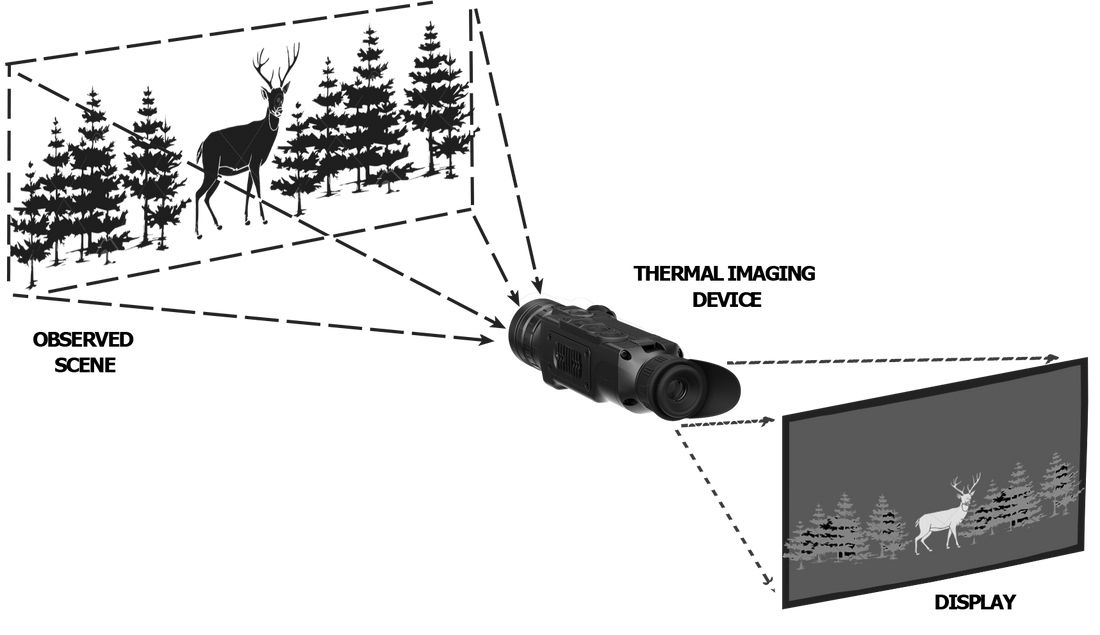
Thermal Imaging: Capturing the Invisible Heat, Perceiving a New Dimension of the World
Share

In the dead of night, special forces pinpoint targets with precision using specialized equipment; during epidemic prevention, staff can quickly screen for feverish individuals without physical contact; in industrial production, engineers can promptly detect equipment overheating risks. These remarkable applications all stem from a groundbreaking technology—thermal imaging. This technology allows us to break through the limitations of visible light, directly perceive infrared radiation emitted by objects, and convert temperature distributions into visual images, opening a new dimension for observing the world.
1. Thermal Imaging: Seeing the Invisible World
The core of thermal imaging technology lies in capturing the infrared radiation emitted by objects. All objects with temperatures above absolute zero continuously emit infrared radiation, which carries temperature information. Thermal imaging devices use specialized optical systems and detectors to convert this invisible infrared radiation into electrical signals. After complex image processing, they ultimately generate thermal images that reflect the temperature distribution on the object's surface.
Compared to visible light imaging, thermal imaging offers unique advantages. It does not rely on ambient lighting and can produce clear images in complete darkness; it can penetrate obstacles like smoke and haze, maintaining detection capabilities in harsh environments; more importantly, it directly reflects the temperature information of objects, providing critical data for diagnosis and analysis.
From military night vision equipment to civilian security surveillance, from industrial inspection to medical diagnosis, thermal imaging technology has permeated various fields. In fire rescue operations, thermal imagers help firefighters locate trapped individuals through thick smoke; in building inspections, they can quickly identify wall leaks and insulation defects; in power inspections, they can detect equipment overheating faults in a timely manner.
2. Core Breakthroughs in Thermal Imaging Technology
Infrared detectors are the core components of thermal imaging devices, and their development has undergone a revolutionary transition from cryogenic cooling to room temperature operation. Early infrared detectors required liquid nitrogen cooling, making them bulky and inconvenient to use. With the advent of new materials like Quantum Well Infrared Photodetectors (QWIP) and vanadium oxide microbolometers, uncooled thermal imaging devices have become widespread, significantly reducing costs and usage barriers.
Optical system design is another key technological breakthrough. Germanium crystals, due to their excellent infrared transmission properties, have become the mainstream lens material. The application of aspherical designs and multilayer coating technologies has significantly improved imaging quality and detection sensitivity. Modern thermal imaging devices can now achieve temperature measurement accuracy of 0.1°C at distances of over a hundred meters.
Advances in image processing algorithms have further enhanced thermal imaging technology. Deep learning-based image enhancement algorithms can effectively remove noise and improve image clarity; intelligent recognition algorithms can automatically mark abnormal temperature areas, enabling fault warnings; multispectral fusion technology combines visible light images with thermal images, providing richer information dimensions.
3. Future Prospects of Thermal Imaging Technology
With advancements in materials science and manufacturing processes, thermal imaging devices are becoming smaller and smarter. The emergence of chip-level thermal imaging sensors has made it possible to integrate thermal imaging functions into smartphones. This will greatly expand the application scenarios of thermal imaging technology, allowing ordinary consumers to enjoy the convenience it brings.
In the medical field, thermal imaging technology shows immense potential. It can non-invasively detect surface temperature distributions, aiding in the diagnosis of breast diseases, vascular diseases, and more; during epidemic prevention, it enables rapid body temperature screening; in traditional Chinese medicine, it provides visualization tools for meridian research.
The integration of artificial intelligence with thermal imaging is opening new possibilities. Intelligent algorithms can analyze thermal image data in real-time, enabling equipment fault prediction, building energy consumption assessment, and crop growth monitoring. In the autonomous driving sector, the fusion of thermal imaging with visible light, radar, and other sensors will significantly enhance vehicles' environmental perception capabilities.
Thermal imaging technology has allowed us to break through the limitations of human vision, opening a new dimension for perceiving the world. From its initial military applications to its current civilian popularization, this technology is profoundly changing our lives and work. As technology continues to advance and application scenarios expand, thermal imaging will undoubtedly play an important role in more fields, providing new tools and perspectives for humans to understand and transform the world. In this future full of possibilities, thermal imaging technology will continue to write its legendary story.
